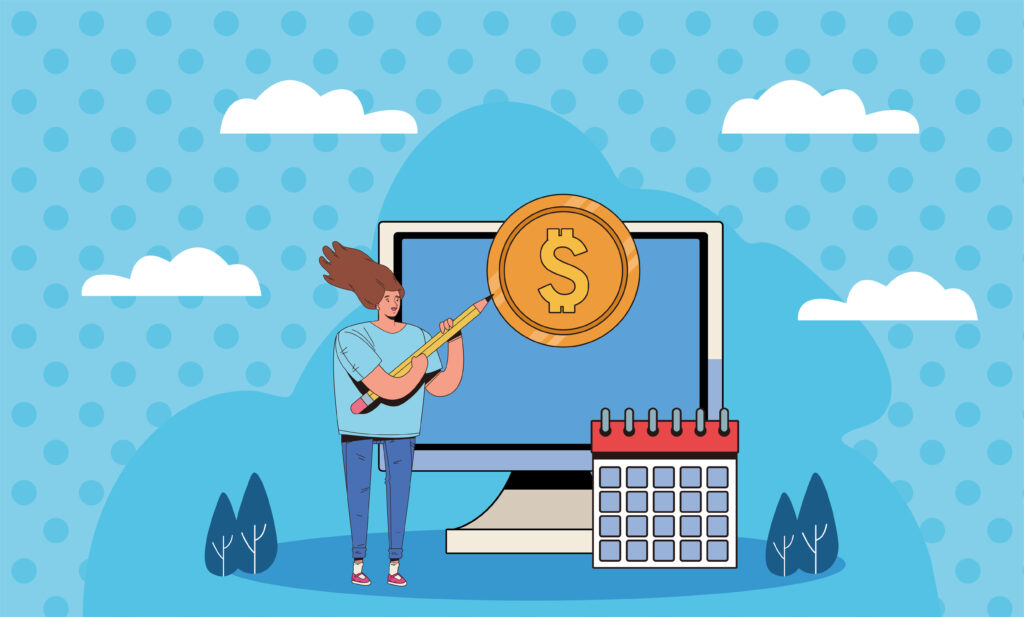How to Calculate TCO for SaaS Applications: A Step-by-Step Guide!

Struggling to get a clear picture of the total cost of ownership (TCO) for your SaaS applications? You’re not alone. Understanding TCO helps businesses avoid unexpected costs and make informed decisions. By selecting the right software, companies can streamline operations, boost productivity, and achieve substantial cost savings. Dive into our step-by-step guide to calculate TCO effectively and transform your software investments today!
TCO in SaaS Procurement: What Does It Really Mean?
Total Cost of Ownership (TCO) in SaaS procurement is a comprehensive assessment of all the costs associated with owning and operating a SaaS tool. This includes direct and indirect costs that arise from the purchase, implementation, maintenance, and ongoing use of the software over its expected lifetime.
Key Components of TCO in SaaS
- Subscription Fees: The annual or monthly cost of accessing the software.
- Implementation and Onboarding Costs: Fees for setting up and integrating the software, including training and data migration.
- Customization and Integration Costs: Additional costs for customizing the software to fit specific business needs and integrating it with other systems.
- Maintenance and Support Costs: Ongoing costs for software maintenance, support services, and potential premium services.
- Data Storage and Backup Costs: Fees for storing and backing up data, which may be included in the subscription fee or charged separately.
- Security and Compliance Costs: Costs for ensuring the software meets security and compliance standards, which are typically included in the subscription fee.
- Upgrades and Updates: Costs for regular software updates and upgrades, which are usually included in the subscription fee.

How to calculate TCO (the Total Cost of Ownership) for SaaS?
Calculating the Total Cost of Ownership (TCO) for Software-as-a-Service (SaaS) applications involves considering all costs associated with using the service over a given period. Here’s a detailed step-by-step guide to help you through the process:
Step 1: Identify Direct Costs
These are the most straightforward costs associated with SaaS applications.
- Subscription Fees: The recurring cost for using the software, usually billed monthly or annually.
- User Fees: Costs based on the number of users or licenses.
- Add-ons and Upgrades: Additional features or modules that might incur extra charges.
Step 2: Identify Indirect Costs
These are less obvious costs but are significant over time.
- Implementation Costs:
- Initial Setup: Costs for configuring the software to meet your needs.
- Data Migration: Moving data from existing systems to the SaaS application.
- Training Costs:
- Initial Training: Costs for training employees to use the new system.
- Ongoing Training: Periodic training sessions as the software evolves.
- Customization Costs: Costs associated with customizing the software to better fit your business processes.
Step 3: Calculate Operational Costs
Operational costs are ongoing expenses necessary to keep the system running smoothly.
- Support and Maintenance:
- Customer Support: Any additional charges for premium support services.
- System Maintenance: Ensuring the SaaS application is running efficiently.
- Integration Costs:
- API Costs: If the software needs to integrate with other systems via APIs, there might be additional charges.
- Middleware: Costs for software that connects different applications.
Step 4: Estimate Downtime Costs
Downtime can be costly in terms of lost productivity and revenue.
- Frequency of Downtime: Estimate how often the system might be down.
- Impact on Business Operations: Calculate the financial impact of these downtimes on your business.
Step 5: Evaluate Security and Compliance Costs
Security and compliance are crucial in today’s digital environment.
- Security Measures: Costs for additional security features or services.
- Compliance Costs: Ensuring the software complies with industry standards (e.g., GDPR, HIPAA).
Step 6: Include Scalability Costs
As your business grows, your SaaS needs might change.
- Scalability: Costs associated with scaling the software to accommodate more users or higher usage.
- Performance Tuning: Costs for optimizing the performance of the software as usage increases.
Step 7: Assess Opportunity Costs
Consider the potential revenue or productivity lost by choosing one SaaS application over another or an on-premise solution.
- Alternative Solutions: Evaluate the cost of other SaaS applications or traditional software.
- Feature Limitations: Costs incurred if the SaaS application lacks certain features that could benefit your business.
Step 8: Calculate the Total Cost of Ownership
Combine all the identified costs over the expected usage period (typically 3-5 years).
TCO = Direct Costs + Indirect Costs + Operational Costs + Downtime Costs + Security and Compliance Costs + Scalability Costs + Opportunity Costs
Step 9: Compare with Alternatives
- If evaluating multiple SaaS options, calculate the TCO for each option and compare the results.
- Consider the TCO in relation to the expected benefits, features, and capabilities of the SaaS application to determine the best value for your organization.
- Conduct a sensitivity analysis by adjusting key variables (e.g., number of users, subscription fees) to understand the impact on the TCO and identify potential cost-saving opportunities.
By following these steps, you can ensure a thorough and accurate calculation of the TCO for any SaaS application, aiding in better decision-making for your business.
Example Calculation
Let’s break down a simple example for a small business using a SaaS CRM application:
- Direct Costs:
- Subscription Fees: $50/user/month
- Users: 10
- Annual Subscription Cost: 50×10×12 = $6000
- Indirect Costs:
- Implementation: $2000
- Training: $1000 (initial training)
- Operational Costs:
- Support: $500/year
- Integration: $1000 (one-time)
- Downtime Costs:
- Estimated at $200/year
- Security and Compliance Costs:
- Additional Security: $500/year
- Scalability Costs:
- Estimated additional cost for growth: $1000/year
- Opportunity Costs:
- Estimated at $1000/year (compared to an alternative solution)
Total Cost of Ownership Calculation:
TCO = $6000 + $2000 + $1000 + $500 + $1000 + $200 + $500 + $1000 + $1000 = $13200
This TCO gives a comprehensive view of what the SaaS application will cost over a year. Multiply this by the number of years you expect to use the software for a multi-year TCO.
It’s important to note that some of these cost components may not apply to your specific SaaS solution or organization, and you may need to adjust the calculation accordingly.

What role does TCO play in assessing SaaS value?
TCO plays a crucial role in assessing SaaS value because it helps you look beyond the initial price tag and uncover the true cost-effectiveness of a solution.
Here’s how:
- Reveals the Full Financial Picture: TCO exposes all the costs associated with using a SaaS, not just the headline subscription fee. This allows you to compare different SaaS options on an even playing field, considering not just the upfront cost, but also the ongoing expenses for implementation, training, and maintenance.
- Identifies Hidden Costs that Reduce Value: By uncovering hidden costs like implementation, training, or ongoing support, TCO helps you assess if the perceived value of a low-cost SaaS holds up. You might find a seemingly inexpensive option ends up costing more in the long run due to unforeseen expenses.
- Prioritizes Value over Price: By focusing on TCO, you can prioritize solutions that deliver the most value for your investment. A SaaS with a higher TCO might be justified if it significantly boosts productivity, automates tasks, or streamlines workflows, leading to a greater return on investment (ROI).
- Supports Negotiations: Understanding the TCO breakdown empowers you to negotiate with SaaS vendors. If a particular cost seems excessive, like implementation fees, you might be able to negotiate a lower price or have the vendor include it in the base subscription.
Overall, TCO analysis helps you make data-driven decisions in SaaS procurement by considering more than just price. It ensures you select a solution that fits your budget while providing the necessary functionalities and benefits to meet your business goals.
How to Compare & Calculate TCO Across Different SaaS Vendors?
Here are the key steps to compare TCO across different SaaS vendors:
- Define your requirements clearly to identify relevant vendors.
- Gather detailed TCO data from each vendor, including subscription fees, implementation costs, support/maintenance, infrastructure costs, etc.
- Standardize the TCO calculations using consistent assumptions, time frames, and methodologies.
- Break down the costs into categories to identify major cost differences between vendors.
- Consider qualitative factors like vendor reputation, support, security, and overall fit.
- Conduct sensitivity analyses by varying assumptions like user count or usage patterns.
- Negotiate pricing options and explore different models with top vendors.
- Evaluate TCO in the context of expected ROI and business value.
By following this structured approach, you can fairly compare TCO across vendors, taking into account both quantitative costs and qualitative factors, to make an informed decision aligned with your needs and budget.
Read Understanding the True Cost of SaaS – What Every Software Buyer Needs to Know
Significance of TCO-ROI Relationship in Software Procurement
The relationship between TCO (Total Cost of Ownership) and ROI (Return on Investment) is crucial in software procurement because it helps you assess the true financial value of a software solution. Here’s why it’s significant:
Understanding the Trade-Off:
- TCO focuses on costs: It provides a clear picture of all the expenses associated with a software solution, from the upfront purchase price to ongoing maintenance and support.
- ROI focuses on benefits: It measures the value you get from your investment. ROI considers how the software improves efficiency, increases productivity, generates revenue, or saves costs in other areas.
Making Informed Decisions:
By analyzing both TCO and ROI, you can make informed decisions that go beyond just the initial cost:
- Balancing Cost and Value: A software with a high TCO might still be a good investment if it delivers a significant ROI. For example, expensive customer relationship management (CRM) software could lead to increased sales and customer satisfaction, ultimately outweighing the cost.
- Justifying Investment: When faced with multiple software options, a high ROI can justify a higher TCO. You can demonstrate to stakeholders that the long-term benefits outweigh the initial investment.
Prioritizing Value Over Price:
Focusing solely on the lowest TCO can be misleading. A seemingly cheap option might have hidden costs or lack functionalities that hinder productivity or require additional workarounds, ultimately impacting your ROI negatively.
Example:
Imagine comparing two project management tools:
- Tool A: Lower TCO with a basic feature set.
- Tool B: Higher TCO with advanced features for collaboration, automation, and reporting.
While Tool A might seem more attractive due to its lower cost, Tool B’s advanced features could significantly boost team productivity, streamline workflows, and improve project delivery times. These benefits could translate to higher ROI, making Tool B the better investment despite its higher TCO.
Optimising the Equation:
The ideal scenario is to find software with a favorable TCO-ROI balance. Here’s how:
- Negotiate TCO: Negotiate with vendors to potentially reduce upfront costs, subscription fees, or implementation charges.
- Maximize ROI: Choose software that directly addresses your business needs and pain points. Quantify the potential benefits in terms of increased productivity, cost savings, or revenue generation.
By carefully analyzing both TCO and ROI, you can make data-driven software procurement decisions that ensure you get the most value out of your investment.

StaQ Copilot: Your Software Procurement Sidekick
Imagine having a software procurement assistant that guides you through this process. StaQ Copilot by StaQ.ai can be your secret weapon for navigating SaaS options. Here’s how StaQ Copilot can help:
- Streamlined TCO Analysis: StaQ Copilot can automate tedious tasks like gathering pricing information and cost structures from different vendors. This allows you to focus on comparing the TCO of various SaaS options efficiently.
- ROI-Focused Evaluation: StaQ Copilot can assist in identifying features within a SaaS solution that directly address your business needs. It can help quantify potential benefits like increased productivity or cost savings, making it easier to estimate the ROI for each option.
- Data-Driven Decisions: StaQ Copilot empowers you with data-driven insights to move beyond a price-centric evaluation. You can prioritize SaaS solutions that deliver the most value for your investment, ensuring they align with your budget and strategic goals.
Get early access to StaQ Copilot today and see how it can revolutionize your software selection process!



